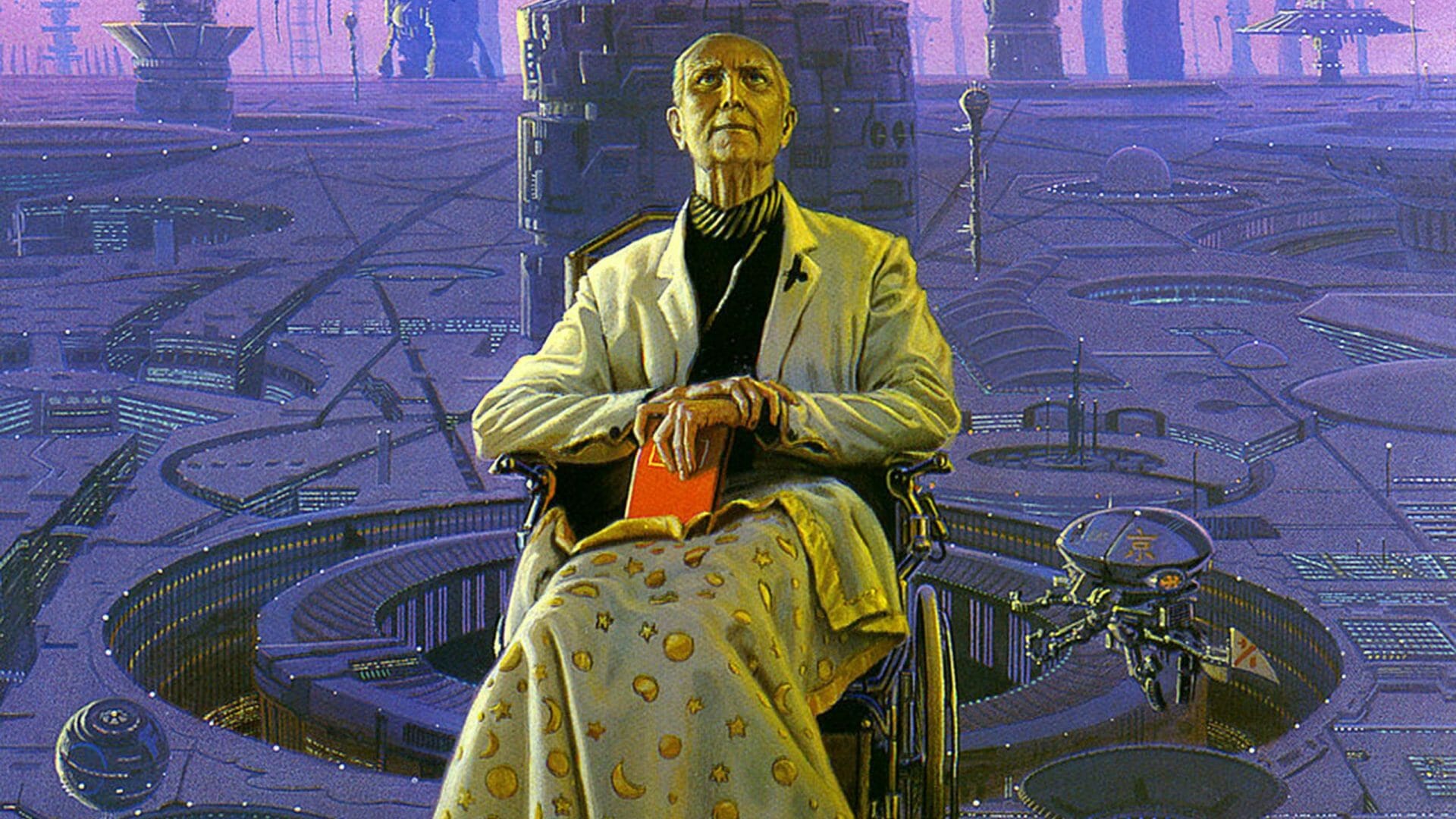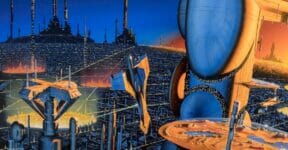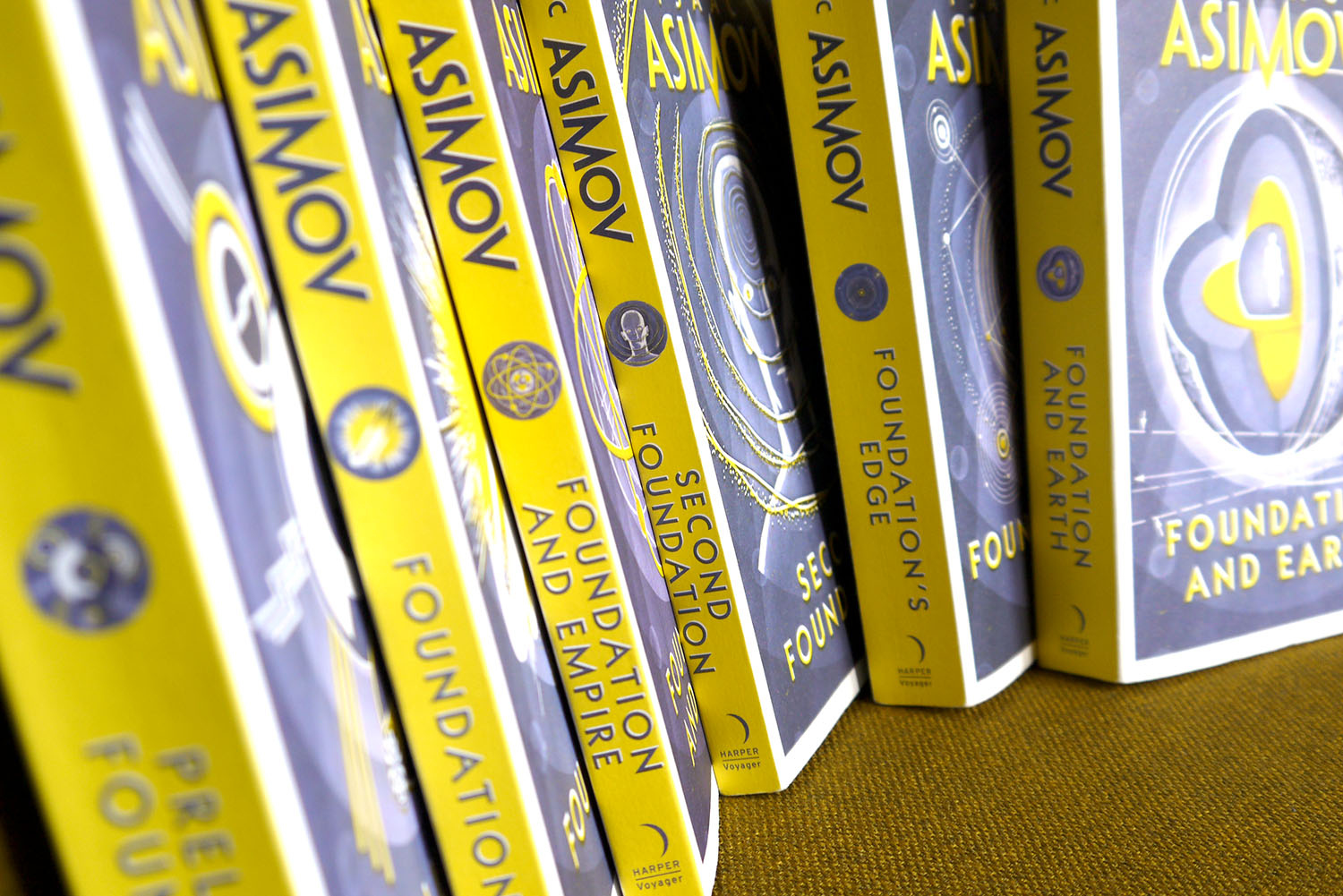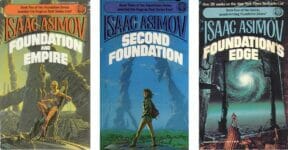Picking up 200 years from where the first volume left off, Foundation and Empire by Isaac Asimov—the second part of the trilogy in the Foundation series books—is divided into two parts: The General and The Mule. The General shows a desperate attempt by the old Galactic Empire at re-establishing dominance by waging war against Terminus, whereas The Mule introduces a menace that would bring the Foundation to its knees.
The General
For two centuries since Hari Seldon established the science-based civilization on Terminus, the Galactic Empire has rarely been in direct conflict with the Foundation. The only time it almost happened was when the Foundation had to fight some small defensive battles against the Empire-backed Republic of Korell. It is now time for a change thanks to the rise of a promising general, Bel Riose. Surprisingly enough, Riose doesn’t know much about the Foundation and what society is like. He only hears obscure information about a colony of “magicians” on a remote planet that has so far undermined the Empire’s dominance over the galaxy.

Riose believes he needs to fulfil his duties to the Empire and the Emperor by bringing back the golden days of imperial power. He forces Ducem Barr, a person from Planet Siwenna, to help achieve the goal. However, Barr himself is a psychohistory believer and is aware of the Empire’s inevitable defeat in the conflict. Barr warns the general of the matter to no avail. Riose still declares war against the Foundation.
The general’s effort is doomed to failure. Since Emperor Cleon II has steadily declined control and influence, anybody who rises to power (whether from inside or outside) of the Empire is considered a threat to the establishment. As with any system of aristocracy, the ultimate ruler can only maintain power by not allowing his subjects to achieve greatness. The Imperial political bodies will not allow anyone other than the emperor himself to be considered a hero. Before the declaration of war escalates into a true bloody conflict, Riose is arrested by the Empire for treason.
The war and the threat from Imperial forces end even without the Foundation being directly involved. For the time being, the Foundation is at its peak of power across the galaxy. By exerting influence over all walks of life with technology and plutocracy, there isn’t really anything to disrupt the dominance. The Foundation, or more precisely the theoretical Second Galactic Empire, is in an era of peace and prosperity.
The Mule
About a century after the fall of General Riose along with his resistance to the Foundation, the remaining territory of the (First) Galactic Empire consists of only a few agricultural planets. Even the empire’s once-great capital city of Trantor has been reduced to ruins by a barbarian fleet.
While the Foundation remains the undisputed leader of the galaxy, the image of true utopia is slowly falling to pieces. Its plutocracy system gradually hinders socio-economic progress; the system bites back when the society starts to see the Traders as second-class citizens. The Foundation, now ruling over the entire galactic civilization, has no further need for front-line missionaries to spread influence; everybody is already under the control of the Foundation, rendering the Traders obsolete to some extent. At the same time, the Mayorship has become a birthright instead of a revered democratically-elected position. Terminus City, the center and origin of the new empire, no longer projects an image of utopia. Both the administration and the population have turned into a conformist and stagnant society.
Despite the proven accuracy of psychohistory in foreshadowing changes in society and devising methods to overcome future challenges, Seldon’s greatest invention still cannot possibly achieve the same thing at an individual level. Psychohistory fails to foresee the emergence of the Mule, a mutant with a powerful psychic ability to control and manipulate the minds of others. Using his power, he takes over societies and planets neighboring the Foundation in preparation for an all-out invasion.
As the Mule advances his bold revolt, the Foundation leaders assume that a pre-recorded message by Seldon will offer solutions to the difficult situation, as it almost always has before. The message foretells a civil war involving the Traders, but it mentions nothing about the Traders fighting for the Foundation against the Mule. By summoning help from nearby planets, the Mule successfully takes Terminus under his control.
Some groups of Traders, who are now nothing more than pockets of resistance in the city, gather an expedition party in search of the Second Foundation. The expedition party consists of four individuals: husband and wife Toran and Bayta Darell, psychologist Ebling Mis, and a refugee clown known as Magnifico Giganticus. They travel to the Great Imperial Library of Trantor to look for information regarding the Second Foundation.
Ebling Mis discovers a hint pointing to its location, but he is killed by Bayta Darell before he can reveal the information to Magnifico Giganticus. Bayta comes to realize that Magnifico Giganticus actually is the Mule, travelling under the disguise of a clown with the party. Only the Darells know about the Second Foundation’s location. The Mule makes his way back to the Foundation to rule the galaxy.
We think Foundation and Empire is a mostly straightforward novel, a worthy follow-up to the first volume. The first part of the novel highlights the inevitable clash between the old Galactic Empire and the Foundation, no matter how trivial it might be to the latter, considering its technological superiority. It does not matter if the war ends quickly—it just needs to happen. In the second part, Isaac Asimov wants to make sure that psychohistory is not flawless. It has problems and can make inaccurate predictions, so it should not be treated like a divine power.
Do you think Foundation and Empire is as good as its predecessor? Is the ending enough of a promising cliffhanger? We’d love to hear from you.
Other things you might want to know:
Is Foundation and Empire also based on “History of the Decline and Fall of the Roman Empire” like the first novel in the series?
The entire premise of the Foundation Trilogy is based on the History of the Decline and Fall of the Roman Empire. As a matter of fact, the characters Emperor Cleon II and Bel Riose are based on actual historical figures from the Roman Empire: Emperor Justinian I and General Belisarius.
Is it also a collection of short stories?
Both The General and The Mule were originally published in Astounding Science Fiction in 1945. The General was initially titled “Dead Hand.”
Who were the “Big Three” 20th century sci-fi writers?
Isaac Asimov was one. The others were Arthur C. Clarke and Robert A. Heinlein.
Check out other articles by month:







